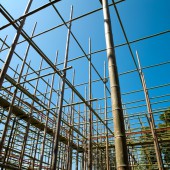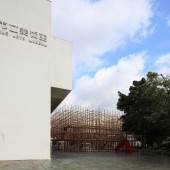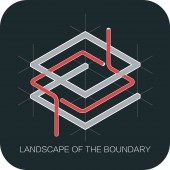Landscape of the Boundary Spatial Installation by Su Fuyuan, Chen Xuancheng & Jen Tahsie |
Home > Winners > #39273 |
 |
|
||||
| DESIGN DETAILS | |||||
| DESIGN NAME: Landscape of the Boundary PRIMARY FUNCTION: Spatial Installation INSPIRATION: The concept of "Landscape of the Boundary" refers to the bamboo scaffolding and is about the connection with the museum, constructed in the same dimensions as the museum lobby, and realized with a great quantity of bamboos. The unique resilience of bamboo transfers force that is applied to the structure as visitors walk on the framework, which creates the body sensation of being situated between the real and subconscious. UNIQUE PROPERTIES / PROJECT DESCRIPTION: The structure of "Landscape of the Boundary" is made up from over 2000 Taiwanese bamboo poles. The core element of the installation is made using poles of "Moso bamboo" that are about 9.5 meters high. The design team also came up with a way of connecting the bamboos together using three-way metal joint, the industrial material that has a similar sized section to the bamboo. OPERATION / FLOW / INTERACTION: The Landscape of the Boundary is an open framework installation. It re-interpreted the relationship among the Museum, the bamboo structure, the square and the environment, through implanting various envents. The 9 envents and the 12 forums holding during the exhibition not only made the installation itself became the vessel contained the activities and perception, but also help us finding the spirit of the square itself. PROJECT DURATION AND LOCATION: The project started in January 2014 for Taipei Fine Art Museum, and completed in April 2014. The official exhibition started in April 2014 and finished in July 2014. It was located in front of the museum. FITS BEST INTO CATEGORY: Fine Arts and Art Installation Design |
PRODUCTION / REALIZATION TECHNOLOGY: moso bamboo and makino bamboo SPECIFICATIONS / TECHNICAL PROPERTIES: structure dimensions: 28m x 28m x 9m. TAGS: bamboo, installation, Taiwan, Landscape, material, RESEARCH ABSTRACT: Landscape of the Boundary is not just a straightforward visual presentation; rather, it involves material exploration, and creates a venue through conversion of the intrinsic spatial quality. The logic of the depiction coordinates comes from bamboo scaffolding, and applies on sketching the museum lobby at "1:1" scale, relocating the lobby outside to create a "positive-negat CHALLENGE: This construction of this installation involved nearly 100 architectural students from the Chung Yuan Christian University, who started from a visual orientation and over the course of several weeks became familiar with changes in the bamboo by working on the material with different machinery. The project fosters hands-on experience, which furthers the education of a young architects by encouraging them to reconsider how architectural traditions are learned, carried forward, and presented. ADDED DATE: 2015-02-21 14:51:14 TEAM MEMBERS (3) : Architect: Fuyuan Su , Architect: Xuancheng Chen and Artist: Tahsien Jen IMAGE CREDITS: Su Fuyuan, Chen Xuancheng & Jen Tahsie, 2014. |
||||
| Visit the following page to learn more: http://s2design.com.tw/portfolio/item/01 |
|||||
| AWARD DETAILS | |
 |
Landscape of The Boundary Spatial Installation by Su Fuyuan, Chen Xuancheng & Jen Tahsie is Winner in Fine Arts and Art Installation Design Category, 2014 - 2015.· Press Members: Login or Register to request an exclusive interview with Su Fuyuan, Chen Xuancheng & Jen Tahsie. · Click here to register inorder to view the profile and other works by Su Fuyuan, Chen Xuancheng & Jen Tahsie. |
| SOCIAL |
| + Add to Likes / Favorites | Send to My Email | Comment | Testimonials | View Press-Release | Press Kit |







